
|
The term "DEFAULT" comes from computer language and it means: 'when there were no other options made by the user this is the predefined option that came with the software or hardware, this is the DEFAULT option.' For example if you use a word processor and the color of the text is black, unless you change the color to a different one , red for example, the color will remain black, that means black is the DEFAULT option. |
|
On Wednesday the 15th of January 1997 all the cars that came into
"Beit Hadar" parking lot in Tel Aviv were directed by the DEFAULT
crew to pre defined parking spots according to their colors.
The "Beit Hadar" parking lot is located in the center of Tel Aviv city area between several office buildings that create a large urbanized space. The object of the DEFAULT project was to create a visual esthetic structure that is recognizably present in that public space, against its chaotic nature, and to hold on to that structure for a period of time while the daily activities continue (cars keep coming in and out the parking lot). The esthetic structure has embodied only itself and was not a tool to express other messages, the cars were categorized by the most visual characteristic - color. Prior to the DEFAULT performance came a statistic research to
determine the exact amount of space each color would need. |
 43.7% of the cars are white,
43.7% of the cars are white,
11.3% black,
9.5% red,
9.5% blue,
9% silver,
7% metallic (bronze, gold)
10% (green, yellow, light blue, brown)
|
The parking lot is very long and narrow (see Fig 1) with two rows
of parking places facing each other in the middle and a long row
that surrounded the lot around it's rectangle curved shape.
The white cars were directed to the surrounding row and rest of the cars were directed to the middle rows, each group of color with the amount of space it required. |
Fig.1 Parking lot plan

The DEFAULT crew consisted of several attendants function groups:
The white group with white outfit- 4 attendants
The red group with red outfit - 1 attendants, (see Fig. 2)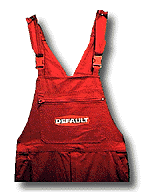
The blue group with blue outfit - 1 attendants
The silver group with silver outfit - 1 attendants
The metallic group with gold outfit - 1 attendants
The black group with black outfit - 1 attendants
The other colors group with gray outfit - 1 attendants
The entrance group with gray outfit - 2 attendants
The second platform entrance group with gray outfit - 1 attendants
The electric moped driver with gray outfit - 1 driver
The head of attendants with orange outfit - 1 head
Fig 2. Red attendants outfit
|
The cars that came into the parking lot were welcomed by the entrance
attendants that directed the drivers to the second platform and
informed the second platform groups of the upcoming cars by radio
communication.
At the entrance to the second platform the second platform attendant
greeted the drivers again and showed them the location of the
group for the color of their car. Each color group had a marker (Fig. 3) in the shape of a tripod with a big circle stamp of the matching color, that marked the starting point from which the cars should be parked. |
 |
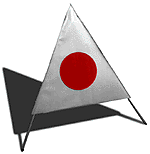
Fig 3. The Red group marker |
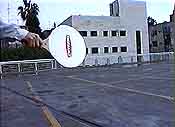 |
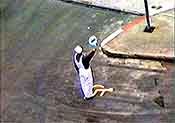 |
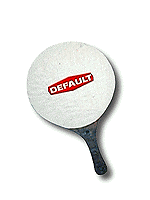
Fig 4. a Default signal (a Matka) |
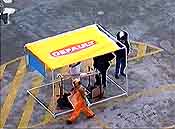 |
 |
1. To take drivers who were asked to park far from a pedestrian
exit to the nearest one.
2. To drive the camera man around the lot.
3. To drive the head of attendants around the lot.
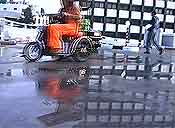 |
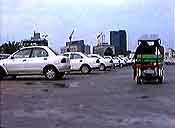 |
The DEFAULT performance began at 7am and lasted until 5pm.
